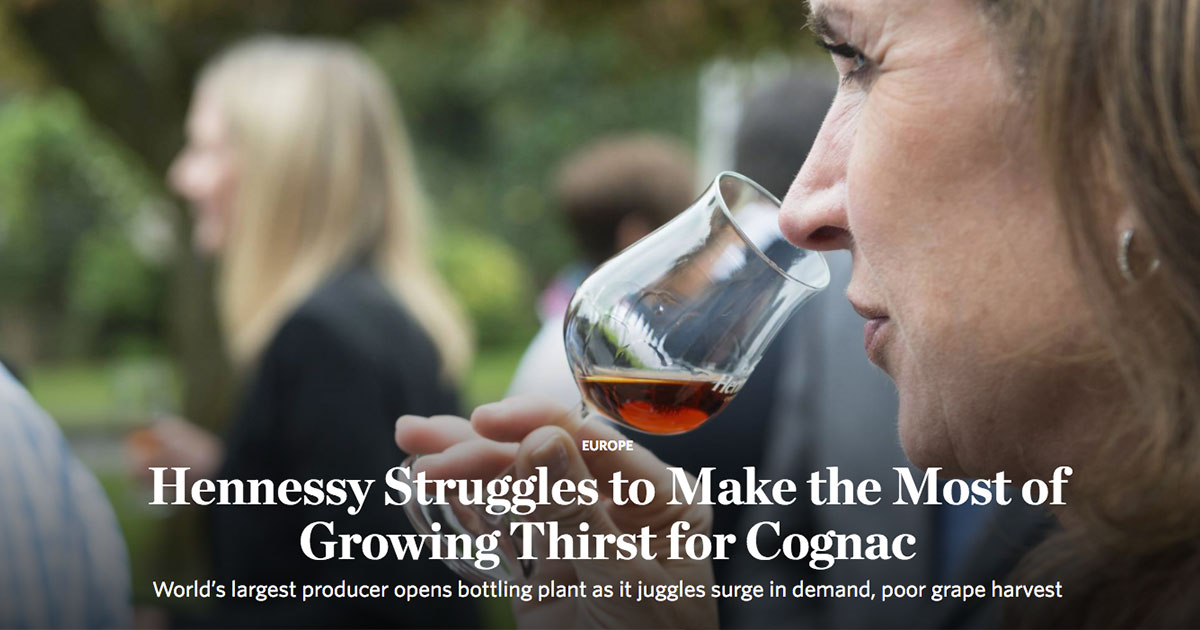Hennessy Struggles to Make the Most of Growing Thirst for Cognac
Hennessy opens its brand new bottling and packaging facility Pont Neuf in Cognac, France. JULIEN FERNANDEZ

Hennessy opens its brand new bottling and packaging facility Pont Neuf in Cognac, France. JULIEN FERNANDEZ

This month Hennessy opened a new plant that is expected to boost shipments by more than 14%. Bottles rattle along a conveyor belt at a rate of 20,000 an hour.
JULIEN FERNANDEZ FOR THE WALL STREET JOURNAL
Bottles pass through a series of machines where they are filled with cognac, labeled and then packaged in twelve-bottle boxes.
JULIEN FERNANDEZ FOR THE WALL STREET JOURNAL
Hennessy storehouses hold barrels of cognac that are decades old. Some barrels date back to the early 1800s.
JULIEN FERNANDEZ FOR THE WALL STREET JOURNAL
Most of the barrels Hennessy uses to age cognac are machine-made, but the company still employs people who know how to make the barrels by hand.
JULIEN FERNANDEZ FOR THE WALL STREET JOURNAL
